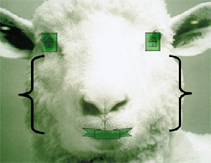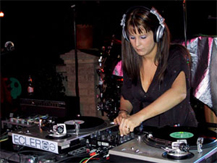 |
 |
 |
Datacloud
|
||
 |
 |
 |
Datacloud
|
||
Datacloud will be out soon from Hampton Press. Apparently you can pre-order it from Amazon.
Here's a bit from the introduction:
You just ... play.
- Carolyn Eilola
We talk in fevered voices of the computer revolution, but the shape and trajectory of that revolution are only now becoming clear, at the fringes. While computers now touch our lives in substantial and ubiquitous ways, their impact has remained relatively benign. The ways in which we work and live now include digital components—and computers are now everywhere, and constitute relatively large portions of our everyday work and the global economy,--but our processes and structures for working and living have not radically changed. Microsoft Word provides us with a faster, more flexible typewriter; Adobe Photoshop offers us a wonderful array of photographic darkroom tools (even if many of us don't recognize them as such); RealMedia streams provide us with radio or television stations.In short, until now the computer revolution may only, as Shoshanna Zuboff (1989) put it nearly two decades ago, be a “revolution” in the sense of revolving around a point, faster and faster.
But in one way of thinking, the revolution is no longer a coherent, discrete event but instead a dispersed network of subtle but profound changes in patterns of working, living, and communicating. Surprisingly, these shifts are not occurring within cutting-edge research and development centers or think-tanks. Although such sites might provide the genesis of new forms and processes of working and living, it is in the real world, on the street and in the workplace and in the home that change begins to take hold. For radical change, by definition, is not simply a speeding up of existing processes or an increase in efficiency of existing structures, but a major r eworking of them. In fact, at first such shifts are not likely to be easily identifiable as important changes, although they will occur in a multitude of disparate locations. Frequently, these changes look chaotic only to those clinging to old ways of working. The interesting things are happening in the interstices rather than the edges.
And here's the Table of Contents.
Table of Contents Acknowledgments Introduction Rearticulations: The Changing Shapes of Computer Space Tendential Forces: A Brief Primer on Articulation Theory and Symbolic-Analytic Work Toward Flatness: Changing Articulations of Interface Design Interface Overflow Articulating (in) the Datacloud Other Stories, Other Texts: Other Ideas About Work Some Rearticulations: Emergent Symbolic-Analytic Spaces Coda: A Text in Fragments Works Cited
[image sources:
U.S. Army Photo;
David Byrne, PowerPoint, Wired;
DJ Shortee, Scratch]
last update: 5.1.05